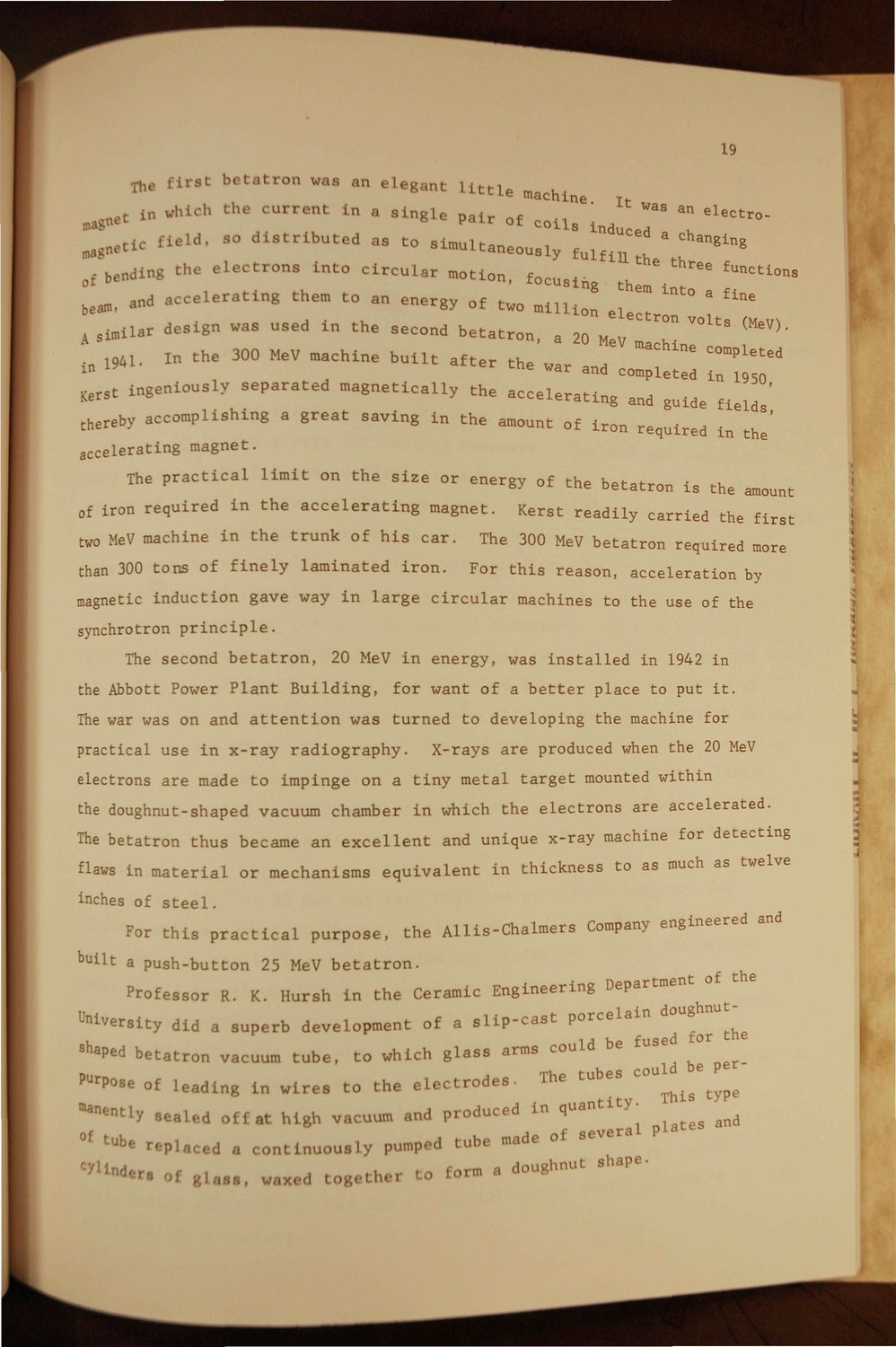Caption: Book - Century of Physics (1973)
This is a reduced-resolution page image for fast online browsing.

EXTRACTED TEXT FROM PAGE:
19 Tlu, fflagnot first betatron was an elegant Little machi lch Che CUrrent s o l n a sin L »* « 8 l e pair of ^ 1 1 ^ " ^ ' * *" 6leCtr °- ^.tic of B.M. d i s t r i b u t e d as to simultaneously L l f f u t n motion) 0f focu Changin8 three bending the electrons into circular Actions ^ ^ f.J' bea0. and accelerating them to an energy , two m i l l i o n 2 0MeV and " ^ ™ ^ ^ * A s i m i lar in 1 9 4 mst design was used in the second betatron, . I n ' ~ the 300 M V machine b u i l t after the war e ingeniously separated magnetically the accelerating a d g u l d e n thereby accomplishing a great saving in the amount of iron required in the' ._,.oiprating magnet. accelerating magne • rating iiiasuc. The practical limit on the size or energy of the betatron is the amount of iron required in the accelerating magnet. Kerst readily carried the first ,n requi w —t - _ 0 ™ ~ . Mg.Dl. teaaiiy carried the firs two MV machine in the trunk of h i s car. The 300 MV betatron required more e e , 300 tons of finely laminated iron. For this reason, acceleration by IAI-IV -inHnrMnn PflVP way in 1 flrc^P circular machines to the . r the magnetic induction gave w^v i n large r i r m l a r m o ^ ^ ^ « *-~ *-u . use of .« synchrotron p r i n c i p l e . The second betatron, 20 M V in energy, was installed in 1942 in e the Abbott Power Plant Building, for want of a better place to put i t . The war was on and a t t e n t i o n was turned to developing the machine for practical use in x-ray radiography. X-rays are produced when the 20 MV e electrons are made to impinge on a tiny metal target mounted within the doughnut-shaped vacuum chamber in which the electrons are accelerated. The betatron thus became an excellent and unique x-ray machine for detecting flaws in material or mechanisms equivalent in thickness to as much as twelve inches of s t e e l . For this p r a c t i c a l purpose, the Allis-Chalmers Company engineered and bui -lt a push-button 25 M V betatron. e Professor R. K. Hursh in the Ceramic Engineering Department University did a superb development of a slip-cast porcelain doughnutr , TA ha fused for the 8ha Ped b, B tron vacuum tube, to which glass arms could PUr Pose of leading in wires to the electrodes. The tubes u a n t 1 ^ J ^ ^ gnd —«»tl, sealed off at high vacuum and produced in 1 ^ tub * »«-i"«Leu a continuously pump*! tub, made of severs "placed a com i nuous i.y KU,,,I . . t*rtMi shapeCylil . *er. M , 1 . . . . waxed t o , d » i to ton a doughnut shape.
|